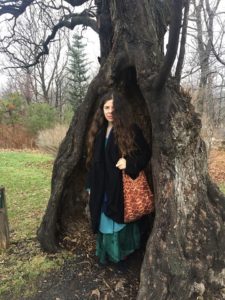Commentary on Parshat Behar (Leviticus 25:1 – 26:2)
In Leviticus 25, the Torah famously explains the practice of the sabbatical year (shmitah) and the jubilee year (yovel), in which those who work the land refrain from farming in order to let the land rest.
It’s not hard to see a connection between the ancient practice of shmitah and yovel and the contemporary need to stop abusing the earth. Indeed, many environmentalist Jewish organizations and leaders, from Rabbi Arthur Waskow and the Shalom Center to Hazon: The Jewish Lab for Sustainability, have made this point. Whether we apply the principle of rest for the land as a specific practice of sabbatical years, or as a general principle of good treatment for the earth and its cycles, the implication is that the land has needs. Meeting these needs benefits us as well as the land.
But the sabbatical and jubilee years don’t address the needs of the land only. Both practices specifically also address the needs of the poor. Deuteronomy 15:1-6 explains that loans are to be forgiven in the seventh year. This practice prevents the poorer individuals in a society from continuing forever under crushing debt. Further, in this Torah portion, we learn that in the jubilee year, each person has a right to return to their achuzah or ancestral land holding (Lev. 25:10-11). A poor person or family cannot be deprived of their connection to the land. Even if they are forced to sell land to pay their debts or sustain themselves, it must return to them in the jubilee year. The ancestral land contains a sustainable livelihood for them as well as the graves of their loved ones — they cannot be permanently deprived of it.
Sign up to receive Torah from T’ruah in your inbox each week.
Why do we have these debt and land restoration practices as part of the sabbatical and jubilee years? Neither practice relates directly to the resting of the land, which the text says is at the center of this observance: “The land shall have a Sabbath of complete rest.” What does the land care who is living on it, so long as it rests? What does the land care about debt remission?
In prescribing this combination of practices for the land’s rest, the Torah suggests that the lives of people and the earth are intertwined. Part of the land’s “rest” is a return to equitable distribution of land among families and tribes, and a just distribution of wealth. This may be because consolidation of land and wealth in too few hands inevitably leads to land abuse as well as human suffering. The two practices of liberation of land and people must go together, because they cannot be separated. Justice for the people must include justice for the land, and vice versa.
Today we have terms like “environmental justice” and “climate justice” that imply that grappling with the impact of environmental pollution and climate change must include an awareness of its impact on people around the world, especially the poor. Climate change produces droughts, floods, and food shortages; increases population migration; and contributes to immigration crises — all of which disproportionately affect the poor.* When governments and societies fail to address environmental issues, the impact of their inaction falls on the most vulnerable among us. In her 2008 book Soil Not Oil: Environmental Justice in an Age of Climate Crisis (North Atlantic Books) Vandana Shiva, the scholar, ecofeminist, and environmental activist, writes: “We can and must respond creatively to the triple crisis and simultaneously overcome dehumanization, economic inequality, and ecological catastrophe.” We cannot address care for the earth without simultaneously dealing with our care for one another. Parshat Behar points us toward an environmentalism that is highly sensitive to the human impact of our misuse and neglect of land, water, and air.

Find more commentaries on Parshat Behar
Leviticus 25:22 asserts: “The land shall not be sold beyond reclaim, for Mine is the land, and you are strangers and temporary dwellers on it.” On this verse, Ibn Ezra says that God is like an eternal dwelling place, into which “one generation passes and another comes.” We are temporary dwellers on the land, not because we will necessarily move away from it in our lifetimes, but because we ourselves are temporary beings. It is the land that lasts, and everything we do must be for its benefit, for it will sustain the generations yet to come.
Rabbi Jill Hammer, PhD, is the Director of Spiritual Education at the Academy for Jewish Religion (www.ajrsem.org), and the co-founder of the Kohenet Hebrew Priestess Institute (www.kohenet.org). She is the author of a number of books, including The Jewish Book of Days: A Companion for all Seasons, The Omer Calendar of Biblical Women, The Hebrew Priestess: Ancient and New Visions of Jewish Women’s Spiritual Leadership (with Taya Shere), and The Book of Earth and Other Mysteries.
—
* Kathleen Newland, “Climate Change and Migration Dynamics” (Sept. 2011), https://www.migrationpolicy.org/research/climate-change-and-migration-dynamics; Tim Padgett, “Guatemalan Climate Change Refugees Pour Over U.S. Border and Into South Florida,” April 9, 2019, https://news.wjct.org/post/guatemalan-climate-change-refugees-pouring-over-us-border-and-south-florida.

